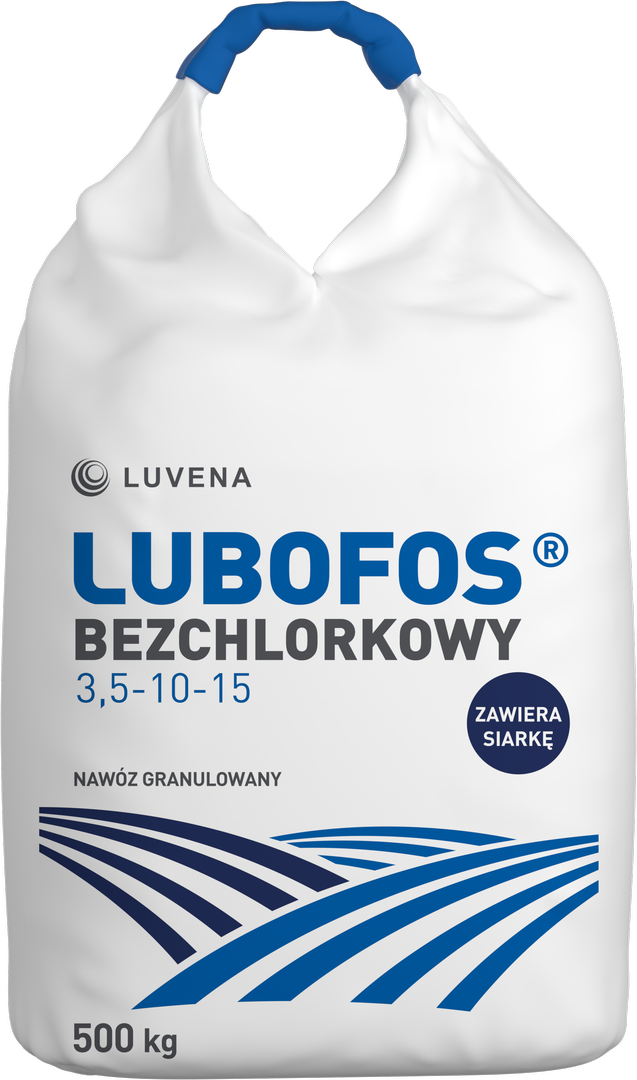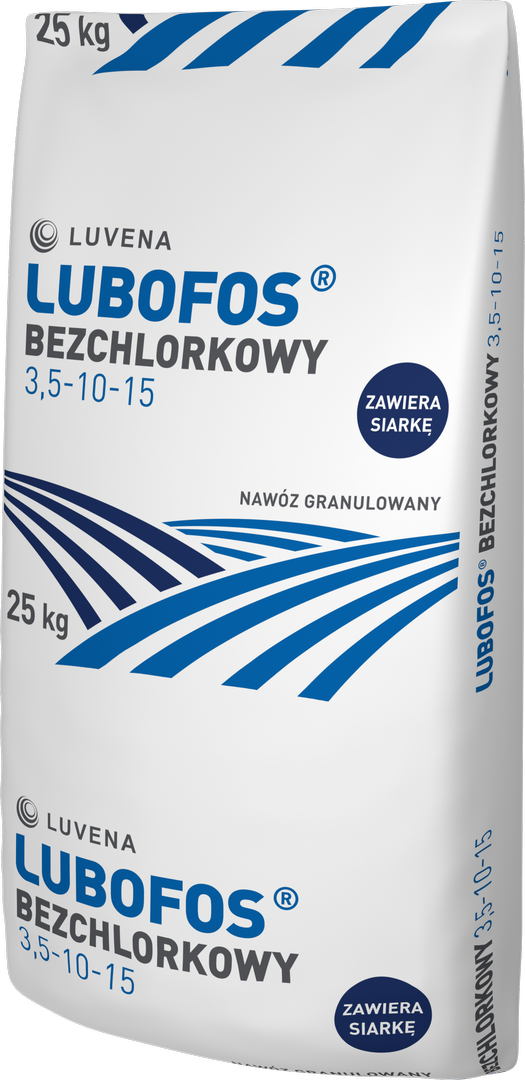

LUBOFOS ® CHLORIDE FREE 3,5-10-15
EU FERTILISING PRODUCT ● GRANULATED ● COMPLEX MACRONUTRIENT FERTILISER
NPK (Ca, Mg, S) 3.5-10-15 (19-2-27)
- low-chloride fertiliser, contains potassium only in the sulphate form
- for plants that do not tolerate high chlorine concentrations (potatoes, shrubs, fruit trees, vegetables, flowers, rose nurseries, tobacco and hops)
- due to the relatively high content of sulphur in forms easily absorbed by plants, the product is also recommended for sulphur-loving plants (legumes, rapeseed, brassicas)
- contains calcium and magnesium in sulphate form
- the forms of nutrients contained in the fertiliser have a very positive effect on the growth and development of plants
- very good spreading properties
CHARACTERISTIC CARD arrow_forward
CERTIFICATE OF CONFORMITY arrow_forward
TECHNICAL SPECIFICATIONS arrow_forward

